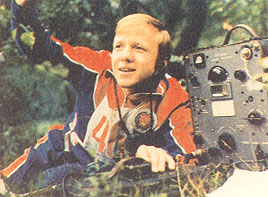
In the early days of ARDF in Europe, fox transmitters were just like the ones used in USA T-hunts of the 1950's---big, bulky and keyed by hand. (From USSR ARDF brochure)
Reprinted with updates from Homing In columns.
Before two-meter FM became popular in the late 1960's, clubs held their mobile hidden transmitter hunts (T-hunts) on the 80-meter (80m) and 10-meter bands. Look through ham radio magazines of the 1950's and you'll see a variety of radio direction finding (RDF) antennas sticking out of car windows, including big box-shaped loops and little ferrite rods. Transmitters and receivers used tubes back then, so "portable" really meant "big and heavy with a handle." Low-voltage dry cells were necessary to light tube filaments, and high voltage batteries powered the tube plates. That didn't stop the ham hiders of that era, who sometimes put their emitters in baby carriages and built them into fake fire hydrants, just like today.
Skywave propagation makes eighty meters a crowded place after dark, so foxhunts on that band were daytime events. (At night, ten meters was preferred.) The winner was usually first vehicle to be spotted by the hider, so hand-held "sniffers" were unnecessary. Almost a half century later, hams on this continent are rediscovering the joys of shortwave-band RDF. That's because it's an important part of the international on-foot foxhunting scene. Today's solid-state technology makes it easier and much more fun.
As regular Homing In readers know, competitive on-foot foxhunting (also called foxtailing, radio-orienteering and ARDF) follows rules that are promulgated by the International Amateur Radio Union (IARU). They originated in Denmark and England, where the sport began shortly after the second World War. Two meters was added later. Nowadays, IARU's national, regional, and world ARDF Championships expect all entrants to compete in a five-fox 80m classic event on one day and a five-fox 2m classic event on another. There are also sprint and foxoring events, both on eighty meters.

In a few counties such as Sweden, 80 meters is still the primary band for ham radio transmitter hunts. A few years ago, I interviewed Per-Axel Nordwaeger SMØBGU, who put out courses for the 1994 ARDF World Championships near Stockholm. P-A dislikes the signal reflections that plague VHF hunts. "I don't find two meters as interesting because its so unpredictable," he says. "You end up in many places other than where the transmitter really is."
Stockholm foxhunts are Wednesday evening at 7 PM in large wooded forests. In most months, that's well after sunset. Snow-covered courses are frequent. The hider puts out seven transmitters, timed to come on automatically and to transmit one after another in sequence. "Our old-fashioned receivers interfered with each other," says P-A. "So we had to spread the hunters out. They scatter into the forest two minutes before the first fox starts. They are allowed to continue to search for two minutes after the last transmitter shuts off, then return to the start. About an hour after the hunt ends, the foxes automatically start transmitting again to help the organizer find them to pick them up."
According to SMØBGU, most Swedish radio-orienteers use the same receiver design, which is about the size of a cigarette pack. "Two Swedes started building them around 1965," he says. "The circuit has been improved over the years. We can buy them either complete or in parts. The ferrite loop is quite OK. My friend Lars Nordgren SMØOY uses a larger air-core loop instead. It is heavier to carry, but gets a sharper bearing null."
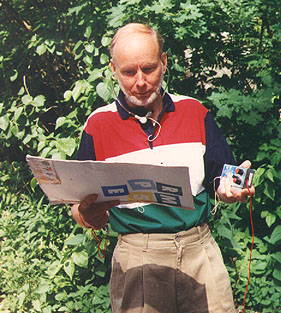
Stateside foxhunters know that 2-meter RDF is made more difficult by multipath. VHF signals reflect from buildings, hills and mountains. Bearings are most accurate when transmitters and receivers are line-of-sight and there are no large terrain features nearby. When you're in a canyon on the back side of a hill, 2-meter signals are weak, and bearings aren't trustworthy.
Eighty meters is a different story. Like daytime signals from AM broadcast stations, 80-meter ground wave signals follow the curvature of the earth and aren't reflected or scattered by terrain features. Long metal structures such as power lines and fences can affect bearings if they are close to the receiver. But in general, bearings are sharper and more consistent than on VHF. Eighty-meter RDF equipment is smaller and lighter, too. That explains why winning times on 80m are always better than for the same age/gender divisions on two meters in the ARDF World Championships.
Ewald Stadler DJ2UE of Herrenberg, Germany is a foxhunt organizer and trainer for the Deutscher Amateur Radio Club. He says, "On 80 meters, you have to know your equipment, the null and front-to-back ratio. But mostly it's running, a sport competition. However on two meters, it's a brain competition. You have to be very careful what you do because of the signal reflections. On 80 meters you can stand still and navigate and take your bearing and then go, but on two meters, no way! If you stand still and take a bearing, you may be off by 30 degrees."
ARDF promoters around the USA are adding 80 meters to their events. Almost all of our southern California multi-fox practice/demonstration sessions have at least one 80m transmitter. Usually the hunters find the 2m foxes first, then start over again on eighty using borrowed gear. They express amazement at the sharp bounce-free bearings on the new band.

On two meters, you can get estimate the direction of a signal by simply holding your handi-talkie or scanner close to your chest and turning around, listening for the signal null that indicates that the source is behind you. This "body shield" technique won't work on eighty meters, because these long-wavelength signals pass right through our bodies with almost no attenuation. Reflectors or shields of metal won't make your 80m set reliably directional either. Attempts to shrink 80m yagis, quads and other high-gain antennas to portable size have proven futile. So loop and rod antennas are the best way to get good 80m bearings, just as they were a half-century ago.
Hand-carried 80-meter RDF sets use the same principles as the marine direction-finders that were standard equipment on vessels before GPS. Some have a circular antenna the size of a salad plate turned on its side. Hams often call them "magnetic loops," but they don't have magnets. They pick up the magnetic field of the incoming signal and are very directional. A loop that is smaller than a tenth of a wavelength in circumference receives maximum signal off the edges. There is a sharp signal null "through the loop," as shown in the photo below. Radio-orienteers moving in the woods continuously orient their loops to follow this null to the fox transmitter.
A more compact magnetic antenna for 80m has multiple turns of wire on a small rod of ferrite material. It looks and works just like the "loopstick" antenna in an AM broadcast receiver. There is a null when either end of the rod "points" toward the signal source. This is analogous to the air loop, because the signal is going through the center of the turns of wire in this orientation.
Though very accurate, the "figure-8" loop and rod patterns are bidirectional. A null toward the north means that it's equally likely that the signal is coming from south. If you're starting from an edge of the hunt area, this isn't a problem. But in the middle of the woods, you need a way to make sure that you haven't passed by a fox. To resolve the ambiguity, 80-meter ARDF sets include a vertical sense antenna such as a whip, a blade, or a dangling wire. It picks up the electric component of electromagnetic waves. When switched into the circuit, usually with a pushbutton, the sense signal combines with the signal from the loop or rod in proper phase to alter the overall directional pattern. It makes one of the two signal peaks much stronger and the other much weaker. Depending on frequency and distance from the transmitter, the combination may not be so perfect as to create a precise cardioid (one peak, one null) pattern. However, it is good enough to easily tell which of the two figure-8 pattern nulls to follow.
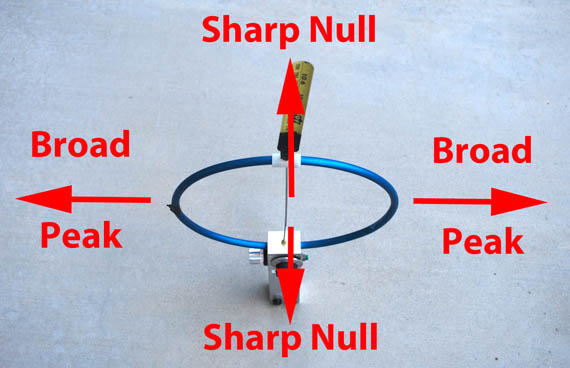
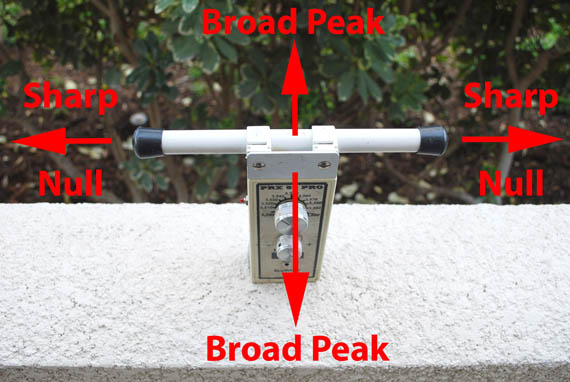
More about the theory and practice of HF loops, rods and sense circuits is in the ARRL Handbook and my book "Transmitter Hunting---Radio Direction Finding Simplified."
Several manufacturers make "longwave-to-microwave" multi-mode hand-held receivers and scanners covering the 80m band. Available models include the Icom IC-R10 and IC-R20, Yaesu VR-500, Alinco DJ-X10T and AOR AR8200IIB. With such a set and an RDF antenna, you're ready for an 80-meter hunt. Be sure that the receiver has CW or SSB modes in addition to FM, because 80m foxes send keyed CW.
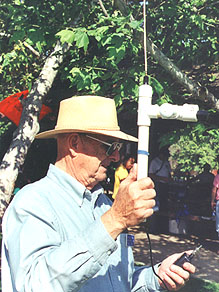
Champion 80m ARDFers prefer integrated receiver/antenna sets. For over twenty years, the most popular 80m ARDF set for beginners has been the PJ-80 from China. Its three-transistor direct-conversion circuit is the essence of simplicity. Incoming signals from the resonant rod antenna are amplified by a bipolar transistor and go to a diode mixer. The local oscillator tunes 1750 to 1810 KHz to minimize 80m radiation. Output of the second harmonic mixer goes to a bipolar audio preamp and then to a LM386 audio output IC.
PJ-80s have been sold as kits or ready to use, powered by four AA batteries. Their biggest deficiency has been low audio output volume. For best results, search your parts drawer for high-output headphones. The best ones I have found so far are the earbids that came with my iPad.

Today there are several variations on this basic set including the PJ-80A kit from Kazakhstan, with a FET front end instead of bipolar, and the R3500D from SDR-Kits in the United Kingdom. It has a TDA2822M IC in place of the LM386 in the audio output. This is a newer chip designed for low voltage operation in radios and music players, giving somewhat greater volume.
At the 2015 USA ARDF Championships in Colorado, Shuya Zhen BD6NX arrived with boxes full of new 80m ARDF sets that are a step up in performance from the PJ-80 in a slightly smaller case. The RF80-C from the Zhengzhou Tianxun Radio Research Institute (CZTXARDF) features a superheterodyne receiver circuit with two SA602 ICs. Power comes from a pair of 3.6-volt rechargeable lithium-ion batteries in 14500 size, which have the same dimensions as ordinary AA alkaline cells. Unfortunately, there is no low-voltage shutoff circuit, so the user must take care to not let the lithium cells become fully discharged, as that will greatly shorten their life. I recommend replacing the supplied batteries with "protected" Li-Ion batteries. They have a built-in circuit board to disconnect the cell when it is nearly fully discharged.
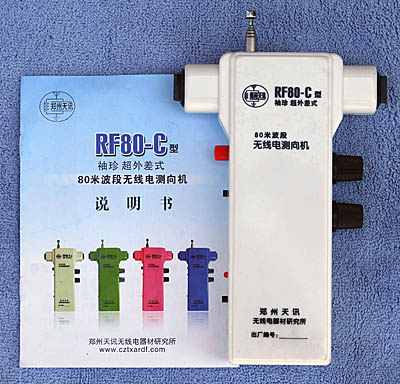
World-class ARDF competitors prefer even more advanced 80m sets that are made in eastern Europe, Germany and the UK. The best ones have high sensitivity, excellent selectivity and low drift. Each country seems to have its favorite design:

There are some very good 80-meter set designs by stateside hams. Dale Hunt WB6BYU near Portland, Oregon developed a home-construction 80m ARDF set that was published in the September 2005 issue of QST Magazine. The antenna is a 6-inch diameter air-core loop. Various prototype versions of Dale's design have been used with success in the USA and IARU Region 2 ARDF Championships. Bare circuit boards for this project ("WB6BYU 80-meter DF Receiver") are available from FAR Circuits in Illinois.
Jerry Boyd WB8WFK of Albuquerque is author of "You Can Build the Albuquerque FoxFinder80" in the November 2000 issue of 73 Amateur Radio Today Magazine. Jerry's prototype unit was used by a USA competitor at the 2000 ARDF World Championships in China.
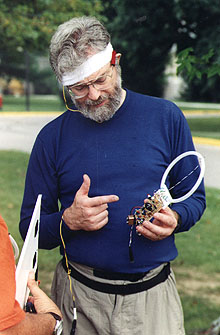
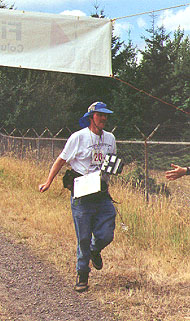
The newest stateside design, used very successfully in recent USA and World championships, is by Vadim Afonkin KB1RLI of Massachusetts. It has a sturdy 8-1/2-inch loop and a high-selectivity superheterodyne receiver with low-drift local oscillator. Vadim offers fully assembled and tested units. He also sells complete circuit boards for those who want to provide their own case and antenna. Contact him by e-mail (vadim.afonkin@gmail.com) for details.
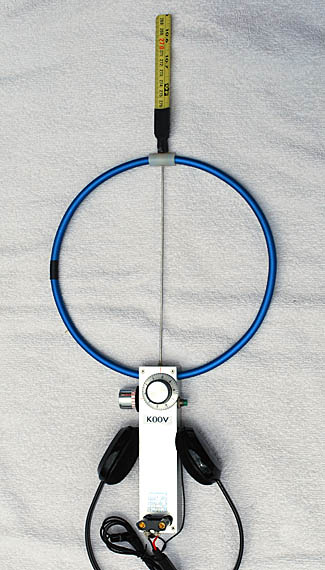
Rig Expert Ukraine Ltd. is best known for antenna analyzers and data mode interfaces. Now the company makes a production version of the FJRX85 receiver design of Nick Roethe DF1FO. The new FoxRex 3500 has a synthesized receiver with four preset memories, an audio S-meter and a transmitter timer. Depending on the setting of the attenuator control, the approximate distance to the transmitter is displayed. Separate attenuator and timer modes are included for classic, sprint and foxoring events. Due to the war situation in Ukraine, Rig Expert products may not be available at this time.
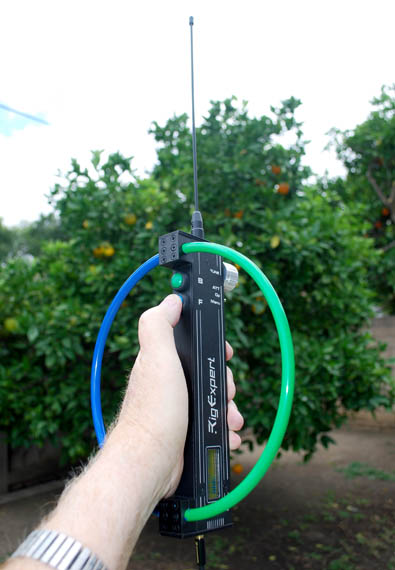
My reviews of the Vadim Afonkin and Rig Expert receivers are in the August 2017 issue of CQ Magazine.
New on the market in fall 2020 is a palm-sized 80m ARDF set from Canada, designed by Les Tocko VA7OM and produced by Dave Miller VE7HR. Ordering information is at this Web site. My review is in the August 2021 issue of CQ Magazine.
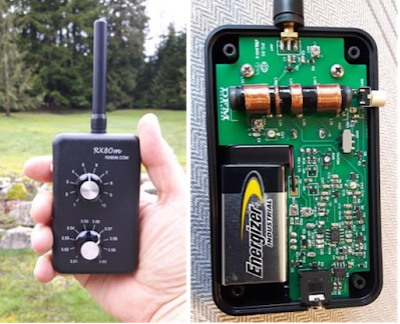
International rules for 80m classic ARDF competitions require transmitters to have 3 to 5 watts output, sending keyed CW (A1). Frequency range is at least 3500 to 3600 KHz. Rules for the sprint event call for two sets of transmitters and two beacons, spaced at least 30 KHz apart, so receivers for the sprint should cover 3500 to 3620 KHz. In the USA, a Technician class or higher license is required for the hider between 3525 KHz and 3600 KHz. An Amateur Extra class license is required for 3500 to 3525 and above 3600 KHz. There's no license requirement for the foxhunters, of course.
The most popular 80m fox frequency is 3579.5 KHz, because inexpensive TV colorburst crystals on that frequency are still easy to find all over the world (even though analog TV is a thing of the past). The finish line transmitter frequency should be at least 30 KHz away from the five fox transmitters to prevent QRM on simple receivers.
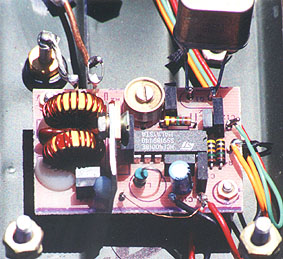
Most QRP crystal-controlled CW transmitters can be pressed into service as 80m foxes. See my article "Super-simple 80-meter ARDF Transmitter" in the November 2000 issue of 73 Amateur Radio Today Magazine for details of an excellent design by Rik Strobbe ON7YD. More information on this transmitter is at Rik's Web site. Circuit boards for this project ("ATX80 transmitter") are available from FAR Circuits in Illinois. The Hardware Sources page of this Homing In site has a parts update for this project.
TinyFox, a very low powered 80m ARDF transmitter for short hunts or for foxoring is described in this Web site by Martin Kuhn, DL3SFB and Matthias Kuhlewein, DL3SDO.
Fox transmitting antennas for 80m must use vertical polarization to provide best results with loops and rods. Such antennas can be simple if there are trees at the hunt site. I found that a more-or-less vertical wire 20 to 30 feet up into a tree and a single radial wire of the same length along the ground usually provide plenty of signal to the starting point without additional impedance matching, even on an IARU championship-size course, when used with the 3-watt ON7YD transmitter.
How do you get the antenna up into the tree? And more important to a harried foxhunt organizer, how do you put five antennas into five trees in a short time? My answer: A slingshot. There are some new commercial slingshot/spinning-reel contraptions for sale to hams, but I have had excellent results with a simple twelve-dollar slingshot from the local sporting goods store. Rather than loft a leader line and then haul up the wire with it, I launch the radiating wire directly.
For me, AWG24 stranded wire with multi-colored Teflon jacket is just right. I found white wire with brown, black and green stripes that camouflages well in leafy trees and on the grass. After one 80m hunt, I asked a hunter what he thought of my antennas. He said, "What antennas?"
Here are some antenna-launching tricks that I learned the hard way:
NOTE: Use extreme caution with your slingshot. Wear safety glasses and watch out for others nearby. Check and obey local laws. The possession and use of slingshots may be regulated by city/county ordinances and park rules.
The radial wire(s) can just be stretched out on the ground. I usually stick short skewers into the soil to hold the far ends of the radials in place and keep the wire from coiling up. In two locations at the June 2000 ARDF Team USA Qualifying Runs, the foxes were next to a creek, so I dropped the radials into it.
Having only one radial results in a more covert hidden transmitter, but it reduces system efficiency and makes the radiation pattern somewhat directional. If possible, run the radial in the direction of the start point, to put maximum signal in that direction. Use care to minimize the hazard of tripping over it.
More efficient transmitter antennas may be needed if transmit power is lower, receiver sensitivity is less, or if RF noise level is high at the site. For the 1999 IARU Region 2 ARDF Championships in Portland, Dale Hunt WB6BYU made antenna sets consisting of a 26-foot vertical wire, three 16-foot radials, and an RF matching transformer. His transformers were wound on Amidon T-130-2 cores, 5 turns on the primary (connecting via 50-ohm coax to the transmitter) and 55-turn secondary (to antenna and radials). I could tell that the matching networks made these antennas work very well, as I copied the foxes several miles away on my mobile rig.
The need for tall trees limits the number of slingshot-friendly 80-meter foxhunting sites in southern California. Standalone 80-meter antennas can be made from 20-foot non-metallic telescoping crappie fishing poles holding up vertical wires, with loading coils at the bases.
Next time your club holds a radio-orienteering session, why not include at least one 80-meter transmitter? Then let me know of your experiences, so I can share them with Homing In readers. Send e-mail to k0ov@homingin.com
Text and above photos Copyright ©2000, 2005, 2016 and 2021 Joseph D. Moell. All rights reserved. Photos by the author unless otherwise stated.
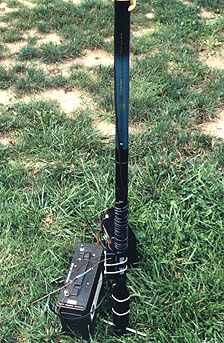
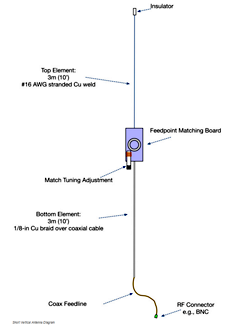
This center-fed vertical transmitting antenna was used at the 2021 ARDF Championships. Its main advantage is that it does not require radial wires. Complete construction plans are in the Open ARDF Web site.
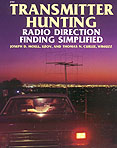 Go to International-Style Foxhunting Comes To The Americas -- How we're getting the ball rolling
Go to International-Style Foxhunting Comes To The Americas -- How we're getting the ball rolling
Go to Latest Championship Foxhunting News -- Stories of recent ARDF events and announcements of upcoming ones
Go to Equipment Ideas for Radio-Orienteering -- Simple and inexpensive receiving and transmitting solutions
Go to Foxhunting for Scouts -- Let's get the kids involved
Go to Extenders Aid Handicapped Foxhunters -- A novel way to include persons with disabilities
 Back to the Homing In home page
Back to the Homing In home page
This page updated 5 July 2025